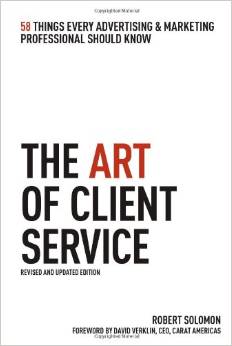The Quest for a Unified Theory of Client Service at #INBOUND14
To chat with Gray and have ZenPilot lead your team through the last project management implementation you'll ever need, schedule a quick call here.

Bobby, what is it exactly that you do?
Bobby’s mom got a roundabout answer, but Robert Solomon (author of The Art of Client Service and founder of Solomon Strategic) shared his valuable experience with HubSpot Partners during HubSpot’s INBOUND 2014 Conference.
Solomon started off with five observations of the typical inbound agency from his experience.
Five observations about you, an inbound agency:
- You are, in the broadest sense, in advertising, but you’re more than just advertisers.
- You are rightly focused on delivering client results, but not nearly as focused on building client relationships.
- Your agencies are relatively new, and your people are relatively young. You are account management-driven, but not always account management-astute.
- Client problems are usually communications-based, and often about managing expectations.
- You want to get better at strategy, and figure that this is the best way to grow.
Two hypotheses
First, strategy drives ideas. “Ideas are the currency we trade in,” says Solomon.
Ideas are prized by clients, but can be hard to come by. You face the never-ending challenge to develop new winning ideas for your client base.
In regards to idea generation, Solomon brings up Occam’s Razor — the principle that simple is usually better. Steve Jobs and Richard Branson endorse similar philosophies.
When coming up with ideas, ask good questions. Framing the issue properly and asking the right questions goes a long way towards developing a solution that works.
Formular: why question, followed by a what if question.
Second, client dissatisfaction usually doesn’t stem from problems with ideas. Instead, it’s usually the result of poor communication, a budget issue, a schedule issue, or expectations that weren’t aligned.
The importance of applying all you know, every time
To avoid client dissatisfaction, Solomon recommends the principle of access. He says that access requires:
- Being responsive and proactive.
- Showing up and following up.
- Managing expectations.
To delight customers, you need to apply all you know about coming up with winning ideas, then following through completely with the principle of access throughout the relationship and client delivery process.
Answering the opening question
Solomon closed his presentation by answering his mother’s question that he shared at the opening of his presentation. If he had to share what he does today, he would say:
“My job is to do all the things necessary to help the clients achieve their goals.“
Let’s keep improving our customer servicing game – it’s always better for everyone!




